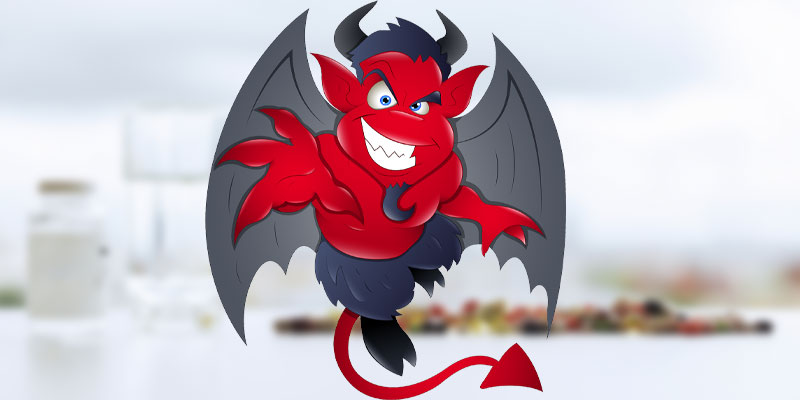Blog
The Devil of Addiction
A disobedient mind will play tricks and head games with you all day long.
Medical science defines addiction as being abnormally dependent on something physically or psychologically habit-forming. As humans, we follow the directives of our consciousness. To you and me, addiction feels like a little monster that lives inside us and compels us to do bad things. It’s a naughty little niggling between the ears that tempts us constantly into wanting what we know we shouldn’t have. If you give it power, it will run you. Your inner devil is the part of your consciousness that tells you to give in to things that speak against your better judgment. It will tell you lies and test your will— chemically pushing ‘risk-reward’ buttons in the brain.
This is merely an empty, restless feeling of something missing—a memory. This ‘memory imprint causes the reward system in the brain to become hyperactive, even when the drug isn’t there.
Such embedded memories of drug use live in your mind. Driving, talking on the phone, having a beer or glass of wine—these associative memories are guided by mental images.
If you visualize something you want to happen, your mind does not really know if it is a memory or not.
You create the programming through visualization—whether it is a conscious realization or not. Your mind picks up ‘past experiences’ and has no way of knowing whether it is a memory or something you imagined.
At the base of the neck where the spine meets the brain is a silver dollar-sized spot that controls these addiction pathways and urges to take a drug. This little-known brain region that turns physical reactions into feelings is called the Insula. It is the backbone of addiction and headquarters for cravings. Drug receptors live in the Insula.
In terms of brain function, the synapse is where it all happens. The nerve transmission at the synapse is an electrical signal that travels along your nerve fibers exchanging biochemical messages. The brain processes this information according to mental commands sent from one neuron to another. This starts as an electric signal that involves neurotransmitters such as dopamine, to create the synapse.
The dopamine system is the mechanism in the brain associated with addiction.
Drugs interfere with dopamine flow.
Serotonin provides the ‘juice’ to trigger this synapse reaction. It is the ‘electrical jelly’ in charge of the body’s trigger system that regulates mood and impulse—the part of the brain responsible for thinking before acting. (Between the prefrontal cortex—the part of the brain responsible for higher reasoning, and the limbic system—the older part of the brain responsible for primitive urges).
Changes in the way the brain works aren’t the only processes involved in drug addiction. Behavior conditioning also plays a part. We learn to repeat any action we find rewarding.
Humans are not born with a thinking system. They are born with a learning system. We begin programming ourselves with habits, misnomers and misinformation at an early age. The conditioning that took place to make you a slave to chemicals didn’t happen over-night. It took anywhere from 1 to 4 ½ years.
The world speaks continuously through our five senses. We relay this information to the brain via the nervous system. When a person uses drugs, that person’s brain learns to function in the presence of those drugs. When the person quits using drugs, the brain doesn’t immediately start to function the way it did before the drug use.
What took so much work and effort to get hooked can be undone if you address the dual aspect of addiction (physiological and behavioral conditioning) by fixing the problem instead of masking it.

